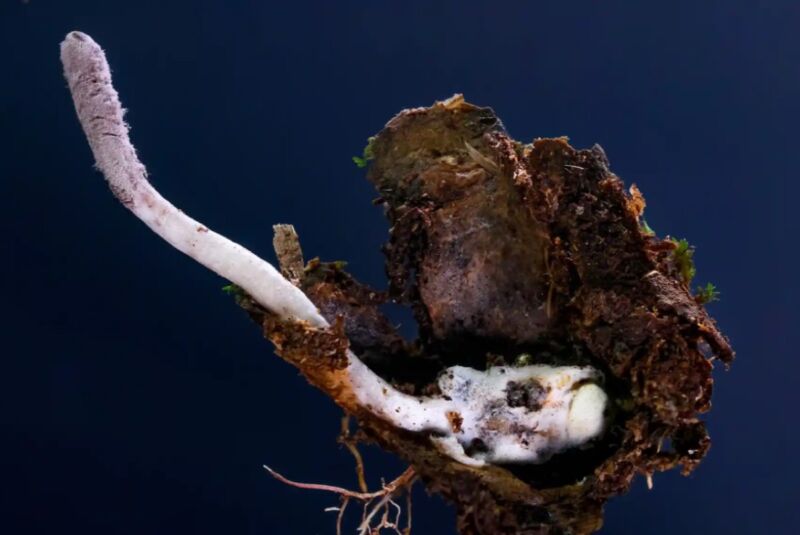Relish the Halloween horror of this purple fungus that “mummifies” spiders

Enlarge / A purple parasitic fungus, discovered in March in a Brazilian rainforest, pokes out of a trapdoor spider's burrow after wrapping itself around the unfortunate spider. (credit: Joao Araujo)
It's Halloween, that time of year when we seek out scary things like vampires, werewolves, ghosts, mummies, and all kinds of similar fictional monsters. But Mother Nature has her own horrors-like the strange species of parasitic purple fungus discovered earlier this year in a Brazilian rainforest that infects trapdoor spiders and gradually "mummifies" its hosts.
There are lots of horrifying parasitic examples in nature, such as the lancet liver fluke, whose complicated life cycle relies on successfully invading successive hosts-snails, ants, and grazing mammals-and altering their hosts' behavior via a temperature-dependent "on/off" switch. Then there is a parasitic worm (trematode) that targets a particular species of marsh-dwelling brown shrimp (amphipod), turning the shrimp an orange hue and altering the host shrimp's behavior. Or consider the species of small-headed flies (Acroceridae) that lay batches of eggs near spiders (or in the webs) and when the larvae hatch, they pierce through the spiders' leg joints. There's also a kleptoparasitic fly species (Milichiidae) that steals food from spider webs and will sometimes snatch prey right out of a spider's mouth. (Rude!)
But fungi are arguably the champions for viscerally gruesome parasitic behavior. According to Joao Araujo, assistant curator of mycology at the New York Botanical Garden, the newly discovered fungus belongs to the Cordyceps family of "zombifying" parasitic fungi. There are more than400 different species, each targeting a particular type of insect, whether it be ants, dragonflies, cockroaches, aphids, or beetles. In fact, Cordycepsfamously inspired the premise of The Last of Us game and subsequent TV series.